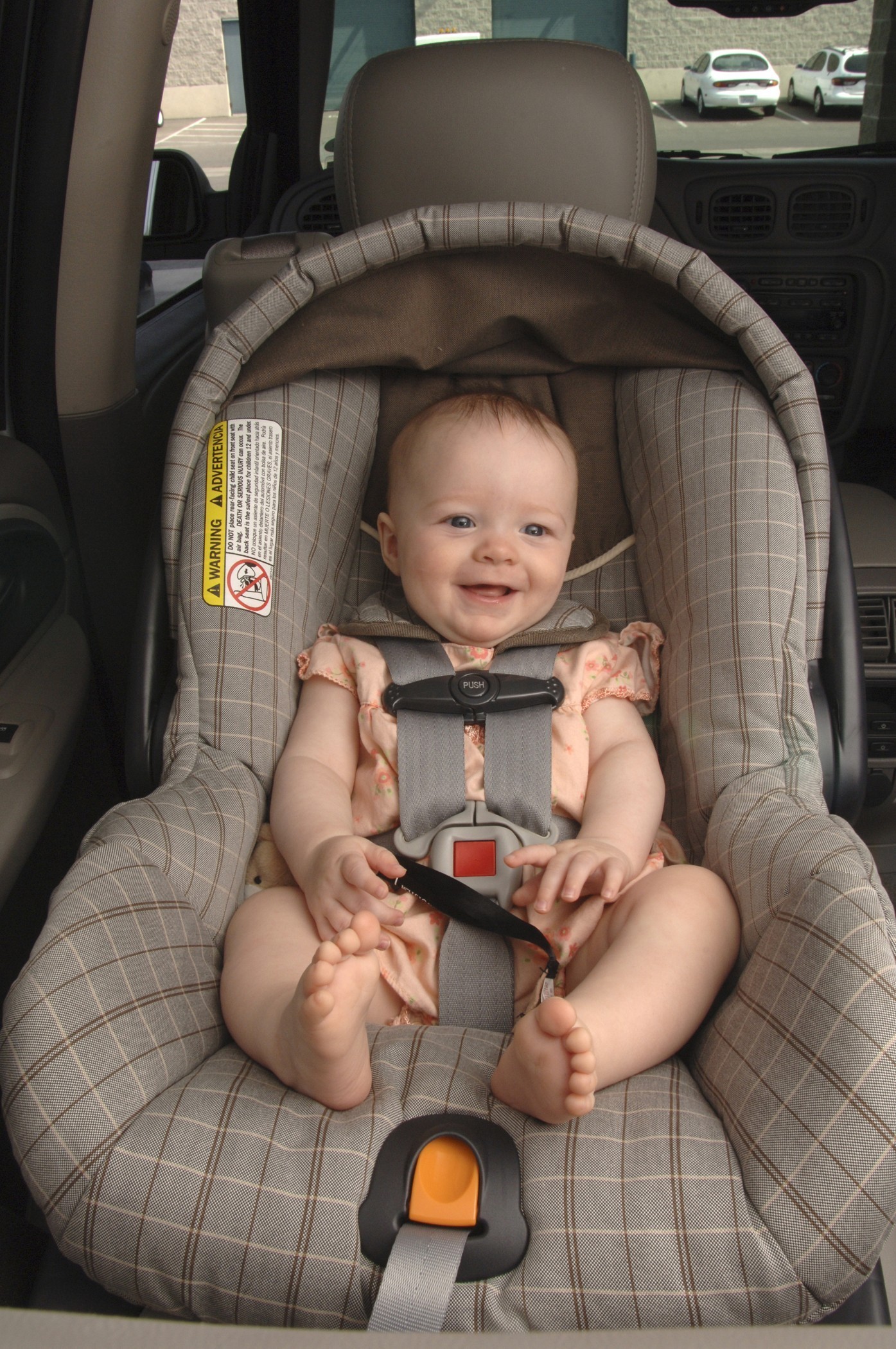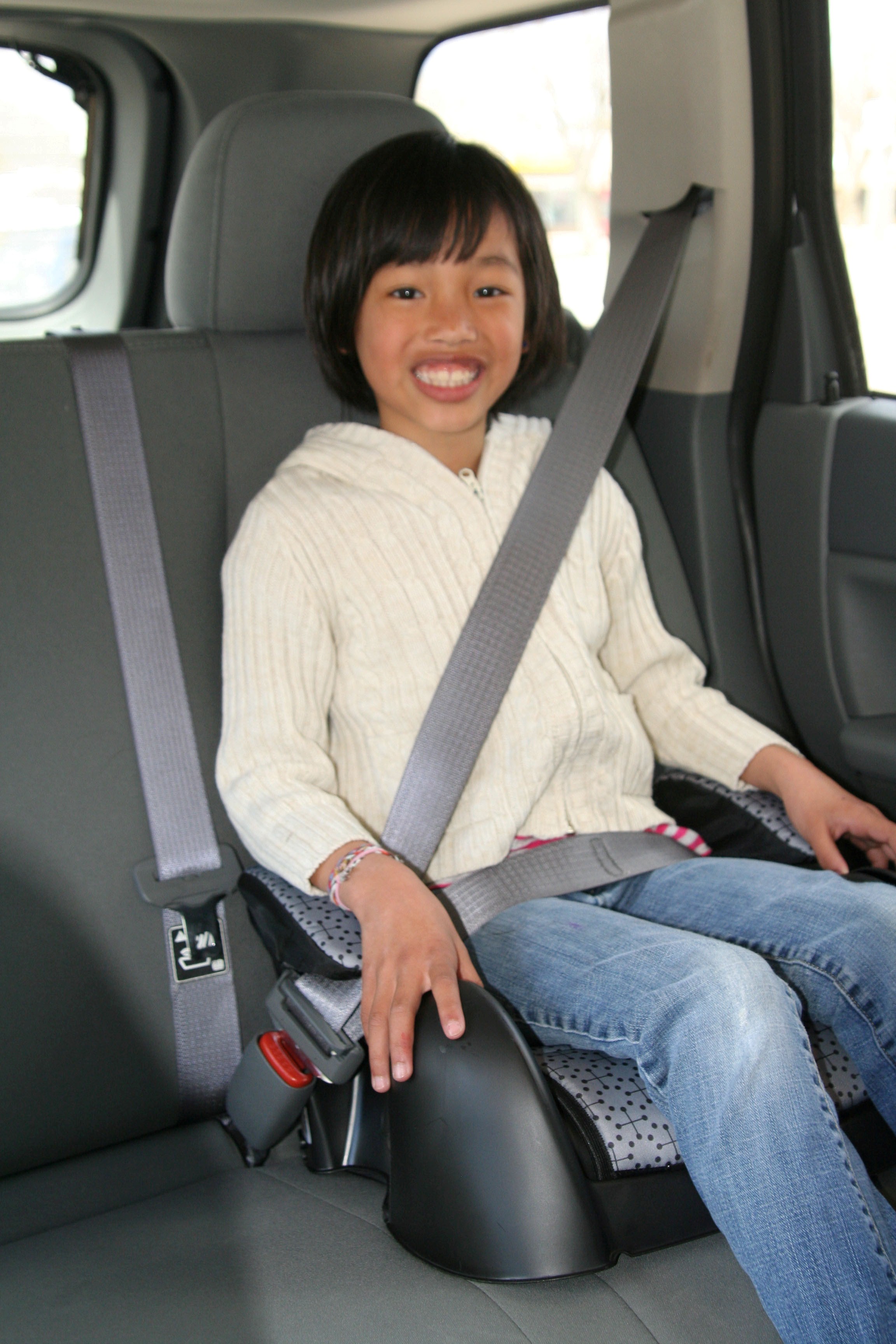
Child Safety Seat Distribution Program
Frequently Asked Questions
What is the Child Safety Seat Distribution Program?
What is current South Dakota law concerning child safety seats?
How do I determine which child seat is best for my child and my vehicle?
What type of Child Safety Restraints are available?
Can I use a second-hand seat?
What are common misuses of child seats?
- Harness too loose
- Harness clip too low (could result in injury based on where located)
- Seat does not fit child's height and weight
- Infant seat not reclined to 45 degrees
- Seat not tight (should not move than 1 inch to either side)
When can my child move from a rear facing to a forward facing seat?
When can my child sit in the front seat?
When is my child ready to use a seat belt?
Until age 8, most children have not developed strong hipbones, and their legs and body are too short to allow for proper fit of a safety belt. Safety belts are designed for adults. Always check belt fit on the child in every vehicle. A belt-positioning booster seat may be needed in some vehicles and not in others.
To be able to fit a safety belt, a child must:
- Be tall enough to sit without slouching,
- Keep his/her back against the vehicle seat back,
- Keep his/her knees completely bent over the edge of the seat,
- Keep his/her feet flat on the floor, and
- Be able to stay comfortably seated this way.
- The lap belt must fit low and tight across the upper thighs. The shoulder belt should rest over the center of the shoulder and across the chest.
What are the best practice recommendations for safety seats?

Age: Birth to 1 year
Your child under age 1 should always ride in a rear-facing car seat.
There are different types of rear-facing car seats:
- Infant-only seats can only be used rear-facing.
- Convertible and 3-in-1 car seats typically have higher height and weight limits for the rear-facing position, allowing you to keep your child rear-facing for a longer period of time.
Toddlers
Age: 1 to 3 years
The best way to keep your child safe is to keep him or her rear-facing as long as possible.
Your child should remain in a rear-facing car seat until he or she reaches the top height or weight limit allowed by your car seat's manufacturer.
Once your child outgrows the rear-facing car seat, your child is ready to travel in a forward-facing car seat with a harness.
Young Children
Age: 4 to 7 years
A forward-facing car seat with a harness should be used for your child until he or she reaches the top height or weight limit allowed by your car seat's manufacturer.
Once your child outgrows the forward-facing car seat with a harness, it's time to travel in a booster seat, but still in the back seat.
Age: 8 to 12 years
Use a booster seat until your child is big enough to fit in a seat belt properly.
To fit properly, the lap belt must lie snugly across the upper thighs, not the stomach. The shoulder belt should lie snug across the shoulder and chest and not across the neck or face.
Remember: your child should still ride in the back seat because it's safer there.
Resources
The links listed below provide additional information on child seats and safety.
Child Passenger Safety:American Academy of Pediatrics, Car Sear Safety
Children's Hospital of Philadelphia
National Highway Traffic Administration (NHTSA)
Special Needs Transportation:Other Links
- Background Screening Information
- Child Care & Dev. State Plan
- Child Seat Safety Distribution Program
- Child Care Assistance Program
- Child Care Inspection Results
- Early Learning Guidelines
- Emergency Preparedness
- Licensing and Registration Information
- Quality Initiatives
- Search for Child Care
- Training and Education


